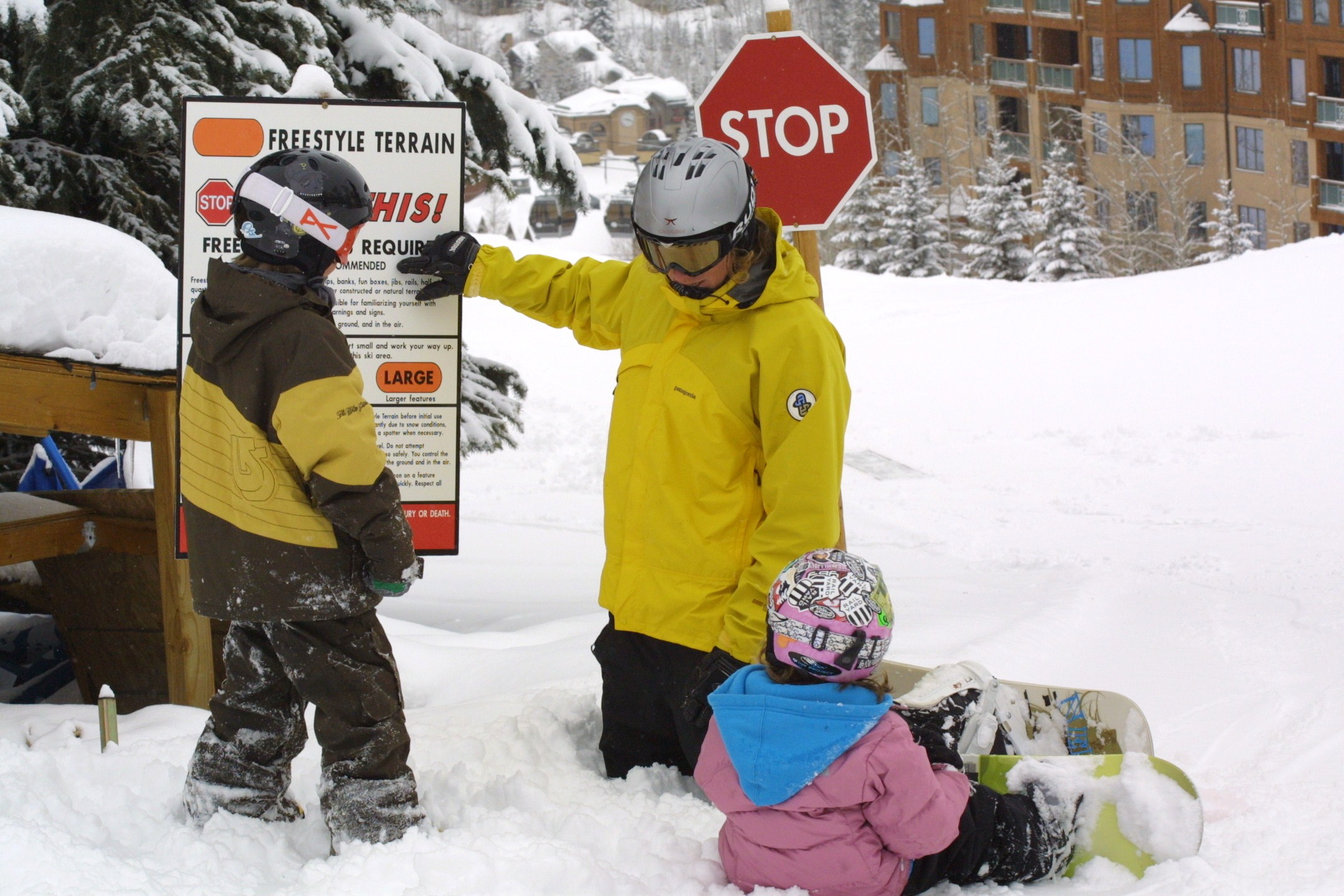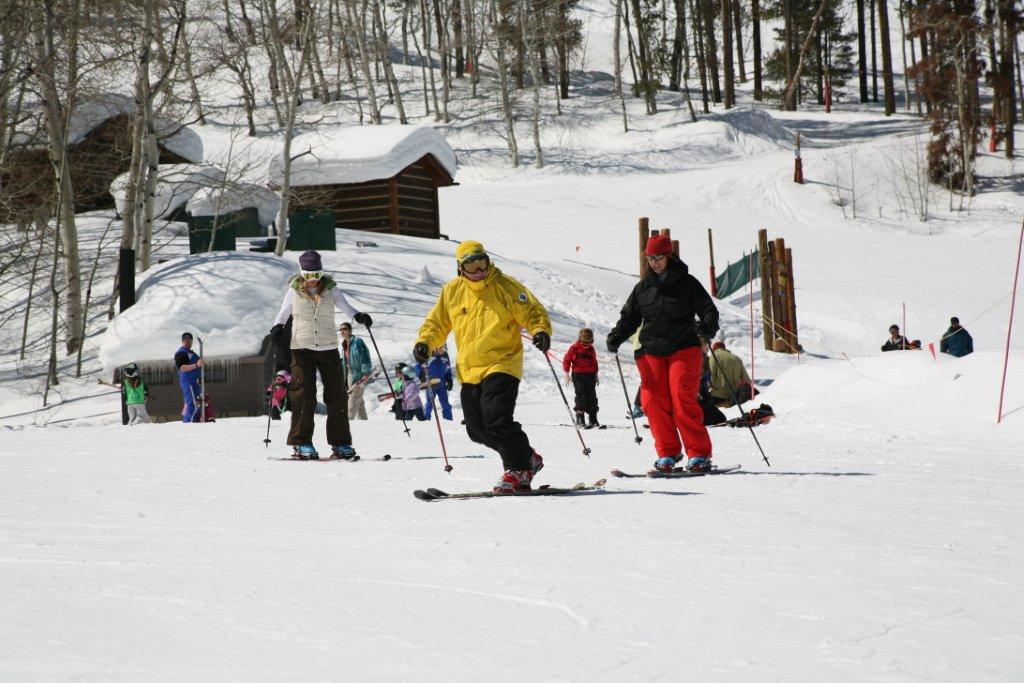32 Degrees: Earl Saline Carves Educational Niche
View this article, by Peter Kray, that originally appeared on page 30 in the Spring 2021 issue of 32 Degrees magazine.
Planning, communication, and flexibility. These are some of the many skills Earl Saline learned while working as an instructor, which he now uses to support the snowsports industry in his role as director of education programming for the National Ski Areas Association.
Saline’s snowsports resume is extensive: ski instructor, Northwest Division Snowboard Committee Chair, early member of the AASI Snowboard Team, manager of Winter Park, Colorado’s snowboard school and adult program, supervisor of Beaver Creek’s private lesson program, snowsports school trainer at Cadrona, New Zealand, PSIA-AASI Education Manager, and Rocky Mountain Division board member. Now at NSAA, he is a key conduit in helping resorts across the country develop better programs and grow their businesses. His time as an instructor informs his career every day, from his commitment to learning to his ability to work toward a desired outcome.
How did you get started in ski/snowboard instruction?
I was a student with John Mohan’s Northshore Ski School in Seattle when someone asked if I wanted to try out that spring to be an assistant instructor. I made the cut, and started training the following season. On that first weekend, I got there on Friday and stayed at the ski school lodge. There was a lesson program starting that night and, the next I know, I’m working with a class of young kids on Friday nights and shadowing another instructor on Saturdays. I had the best of both worlds for the next several weeks, being pushed into that Friday class and then having the Saturday apprentice program where I could watch, listen, and learn.

What did you learn early on about working with groups, managing expectations, and overcoming obstacles?
The first, of course, was how to keep track of everyone. Then, how to make everyone in the class feel like they belonged. As an introverted teenager, I quickly learned that I needed to reach out to my students and establish a connection by accepting them as they are.
Expectations are interesting in that everyone in the lesson has them. A critical first step for the instructor is to set accurate expectations. I’ve made plenty of mistakes over the years; most often as a result of incorrect assumptions about a student’s motivations or expectations. I’ve found that checking my understanding before acting saves me and my students a lot of stress and wasted time.
What was your timeline of being offered new responsibilities, especially with regard to managing lesson splits… and other instructors?
I’d already taught skiing part-time for several seasons when I started snowboarding in the 80s, and that experience prepared me to help train new and younger instructors on the fundamentals of teaching. Training others helped me take on more management tasks at Washington’s Summit East, then known as Hyak.
As I pursued my PSIA certifications, I eventually moved to Stevens Pass, Washington, in the early 90s, to work for Andre Hirss and Sven Jonassen. They provided opportunities that increased my exposure to managing lessons, school operations, and training a wider spectrum of instructors. Eventually, (former AASI Snowboard Team member) Chad Frost and I ran the school at Stevens. From there, making the AASI Snowboard Team in 2000 opened the door to travelling, training, and examining around the other divisions.
What other jobs did you have, and how did they help you grow professionally?
I spent time working in the printing industry, a season on a fish tender in Alaska, and a couple years landscaping. The printing industry is detail- and quality-oriented, and the last print company I worked for sent me to supervisory and management classes, which I still find valuable.
My time in Alaska reinforced the need for a strong work ethic and to do what it takes, for however long it takes, to get the job done – sometimes in difficult conditions. My takeaways from the landscape industry include the importance of integrity, quality work, continually learning new and different skills, and time management.

You made the AASI Snowboard Team, and then went on to become PSIA-AASI Education Manager. How did you build your management skills?
Snowsports schools are amazing melting pots that bring people together from all walks of life. Putting management skills into practice, during and outside of the season, is really the core of “how” I’ve developed professionally. Instructing teaches you to always be “on,” ready to respond to a guest.
Increases in responsibility brought with them the need to become more precise with the “hard” skills of budgeting, finance, scheduling, and business planning. Along with those came the need to continually improve my “soft” skills, always working on communication and presentation skills and my abilities to connect with and coach an ever more diverse group of people. And, during two stints at Winter Park, I also went back to school, completing my BA in Business Management and my MBA.
Do you have any role models who inspired the way you lead?
I’ve been fortunate to work with a lot of great people who showed me what it means to manage and lead. John Mohan comes to mind. He was an inspirational leader with a knack for conveying the big picture while reinforcing the importance of small details. His inspirational attitude helped me as a young instructor and as a team member, in that I saw that my role was not just educate others but to get them excited about snowboarding, the industry, and themselves.
How would you describe what you do now?
At NSAA, I’m involved with a wide variety of projects and events, from our regional conferences and national convention, to developing education programs and resources such as the #RideAnotherDay (#RAD) campaign and our Lift Maintenance Resource Guide. At the root of everything is trying to help our member areas and their personnel have successful seasons.
Former NSAA CEO Michael Berry had a saying that NSAA’s role wasn’t just to bring an issue to the attention of our members, it was to present solutions and constantly look over the horizon to see what is coming to help our area members prepare. To do that, I try to look across the entire ski and ride area operation and work with area personnel, our supplier members, and other organizations, like PSIA-AASI and National Ski Patrol.
The #RideAnotherDay campaign is one of the projects I am most proud to have worked on. The story of Kelli and Chauncey Johnson – whose 5-year-old daughter Elise was killed in a collision with a reckless snowboarder (who also died) – is incredibly tragic, and yet their grace and desire to help others continues to inspire me. The other work I do with our committees and resource guides, like the Freestyle Terrain Resource Guide, gives me the chance to work with a broad group of industry people, some who are newer to the industry and some who are lifelong industry people. Getting to work with great people that have such a spectrum of knowledge and experience keeps me learning every day.

How does your teaching experience continue to inform the work you do?
Teaching helped me learn to respect people and the different ways that people take in, process, and convey information. I have to be creative in finding ways to help deliver information, whether in person, virtually, or in written form. Seeking out and learning new skills serves me well as we/NSAA have transitioned this summer to producing and delivering content virtually. That flexibility has helped NSAA provide valuable content and tremendous value for our members from the moment they closed in the spring of 2020 to now, as they open and operate during the COVID-impacted season.
What keeps you up at night?
Sustainability – specifically, the sustainability of the industry. To survive long-term, we have to attract new participants, hold onto current participants, and encourage skiers and riders to visit the slopes more often and bring their friends. We also have to do a better job of capturing the institutional knowledge our retiring employees carry in their heads, and we have to keep the “fun” of skiing, snowboarding, and mountain recreation alive, appealing, and accessible to as many people as possible.
Looking back, how did your work as an instructor set the stage for what you do now?
Teaching is an incredible way to learn life skills that translate to any line of work. John Mohan told me that when I first started teaching and he couldn’t have been more right. The communication skills necessary to work with a variety of people, the ability to always be thinking ahead to the next step and towards the desired outcome, to have a plan, and to be flexible are skills I use every single day.







